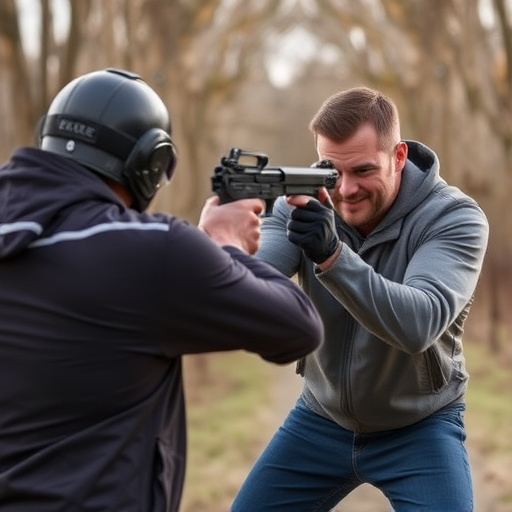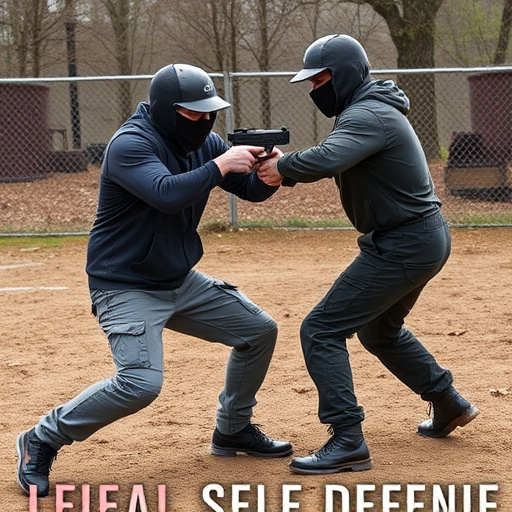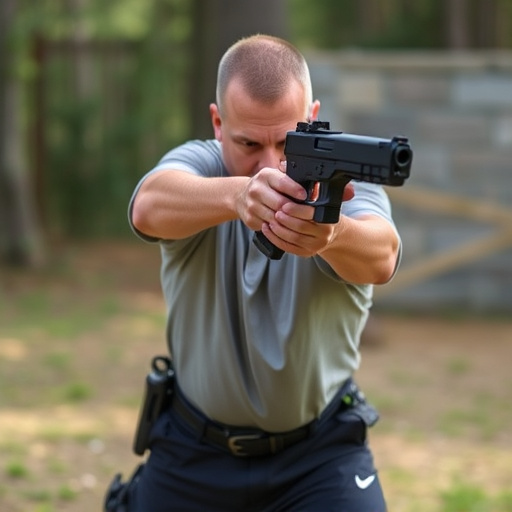Non-lethal weapon training equips individuals with de-escalation techniques and non-deadly force skills, empowering them to protect themselves and others responsibly. The pink stun gun with a disable pin safety mechanism stands out for its effectiveness, safety features, and compact design. Proper certification ensures users handle these devices safely within legal boundaries, promoting a culture of safety in potential threats. Understanding regional laws governing pink stun guns with disable pin safety features is crucial to avoid legal issues while ensuring public safety.
In today’s world, personal safety is paramount. For those seeking effective self-defense options without lethal consequences, non-lethal weapon training and certification are gaining prominence. Among these tools, the pink stun gun with its built-in disable pin safety feature stands out as a popular choice for individuals looking to protect themselves and their loved ones. This comprehensive guide delves into the importance of non-lethal training, explores the role of the pink stun gun, examines key features like disable pin safety mechanisms, outlines certification processes, and navigates legal considerations for responsible ownership.
- Understanding Non-Lethal Weapon Training and its Importance
- The Role of the Pink Stun Gun in Self-Defense
- Key Features: Disable Pin Safety Mechanism Explained
- Obtaining a Certification for Non-Lethal Weapon Use
- Legal Considerations and Responsible Ownership
Understanding Non-Lethal Weapon Training and its Importance

Non-lethal weapon training is an essential aspect of modern personal security and defense preparation. It equips individuals with knowledge and skills to handle situations that might otherwise escalate into violent conflicts, focusing on de-escalation techniques and employing non-deadly force when necessary. One such tool gaining popularity for its effectiveness and safety features is the pink stun gun with a disable pin. This innovative device combines high-voltage electrical current with a simple safety mechanism in a compact form factor, allowing users to deter potential threats without causing permanent harm.
The significance of this training lies in its ability to foster awareness, confidence, and responsibility among individuals seeking self-defense options. By learning to use non-lethal force responsibly, citizens can better protect themselves and others while respecting the legal boundaries surrounding such weapons. This training promotes a culture of safety, ensuring that individuals have the tools to defuse potentially dangerous situations effectively.
The Role of the Pink Stun Gun in Self-Defense

In the realm of self-defense tools, the pink stun gun has emerged as a unique and innovative option, appealing to both individuals and professionals alike. This compact device is designed with a specific focus on non-lethal force, making it an attractive choice for those seeking effective protection without causing permanent harm. One of its standout features is the integrated disable pin safety mechanism, ensuring that the stun gun can only be activated by the user, adding an extra layer of control and security.
The pink stun gun’s effectiveness lies in its ability to deliver a powerful electrical shock, temporarily paralyzing an attacker without leaving permanent injuries. This non-lethal approach is particularly valuable in situations where de-escalation is crucial, allowing individuals to defend themselves while maintaining the option to retreat if needed. With proper training and certification, such as that provided by non-lethal weapon training programs, users can gain confidence in employing this tool responsibly, making it a game-changer for personal safety in today’s world.
Key Features: Disable Pin Safety Mechanism Explained

The Pink Stun Gun, a non-lethal weapon designed for personal protection, stands out due to its unique Disable Pin Safety Mechanism. This innovative feature sets it apart from traditional stun guns, offering users an extra layer of control and safety. The mechanism is simple yet effective; a small pin must be disabled before the device can be activated, ensuring that accidental discharge is nearly impossible.
This safety protocol is particularly beneficial for individuals who may carry the stun gun in their daily lives or for those looking to maintain it as a backup security measure. By requiring an intentional action to disable the pin, users can rest assured that their device is under their control, providing peace of mind and enhancing personal safety when facing potentially threatening situations.
Obtaining a Certification for Non-Lethal Weapon Use

Obtaining a certification for non-lethal weapon use, such as a pink stun gun with a disable pin safety feature, is a crucial step in responsible weapon ownership and deployment. This process involves comprehensive training that equips individuals with the knowledge and skills to handle and deploy these devices effectively while minimizing risks. The certification typically includes hands-on training with various non-lethal weapons, learning proper technique, understanding legal implications, and mastering de-escalation strategies.
During training, candidates learn how to identify situations where a non-lethal weapon is appropriate, safely stow and secure the device, and administer first aid in case of accidental discharge or injury. The pink stun gun, for example, with its disable pin safety feature, requires specific handling techniques to avoid accidental activation. Certification programs ensure that users are prepared to act responsibly, proportionately, and within legal boundaries, making them invaluable resources for self-defense and law enforcement applications.
Legal Considerations and Responsible Ownership

When considering non-lethal weapon training and certification, it’s paramount to understand the legal landscape surrounding these devices. The use, possession, and carrying of non-lethal weapons like a pink stun gun with a disable pin safety feature are governed by stringent laws that vary from region to region. It’s crucial to research and adhere to local regulations to avoid any legal repercussions. Responsible ownership includes thorough training on the device’s safe operation, understanding when its use is appropriate, and recognizing the potential consequences of misuse.
This responsible approach necessitates a commitment to learning about de-escalation techniques and proper physical control methods. Owning and carrying such a device should never be done lightly; it comes with significant responsibilities. Users must be prepared to demonstrate proficiency in handling the pink stun gun, including its safety features like the disable pin, during any interaction to ensure public safety and avoid unnecessary legal issues.
Non-lethal weapon training certifications are essential for those seeking self-defense options, especially with modern tools like the pink stun gun featuring a disable pin safety mechanism. Understanding these devices and their legal implications is crucial for responsible ownership. By obtaining the proper certification, individuals can ensure they use non-lethal force effectively and safely, making them better prepared in potentially dangerous situations.
